
Dusty light filters through dirt-smeared windows in a hammam apparently frozen in time. Upstairs are the apartments of the family who owned it, redolent in faded, turn-of-the-century drapings.
Carved, wooden, art nouveau doors open up onto rooms knee-deep in discarded items, some of them treasures: elaborately handwritten 19th century manuscripts containing instructions on how to cast spells; a vintage mid-20th century Peugeot car, one inquisitive headlight peeking from a half-open garage door; a canvas by a famous Tunisian painter well-appreciated in his time; and black-and-white portraits of immaculately-presented men and women topped with fezzes and bonnets.
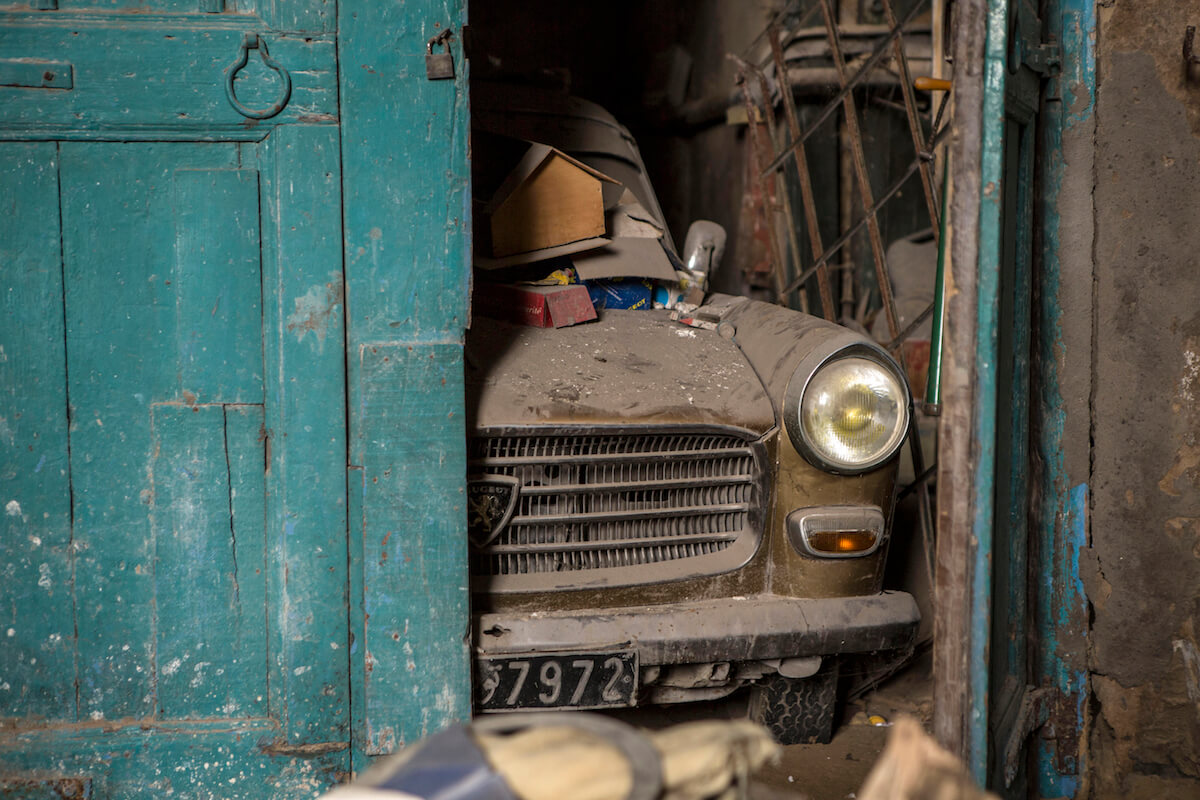
The people and buildings in these photos no longer exist. One postcard features an Arcadian-looking Benghazi in what is today Libya, all pergola-lined walkways and skillfully-carved Italianate stone arcades – a far cry from the mounds of rubble that years of post-revolutionary fighting have reduced the city to.
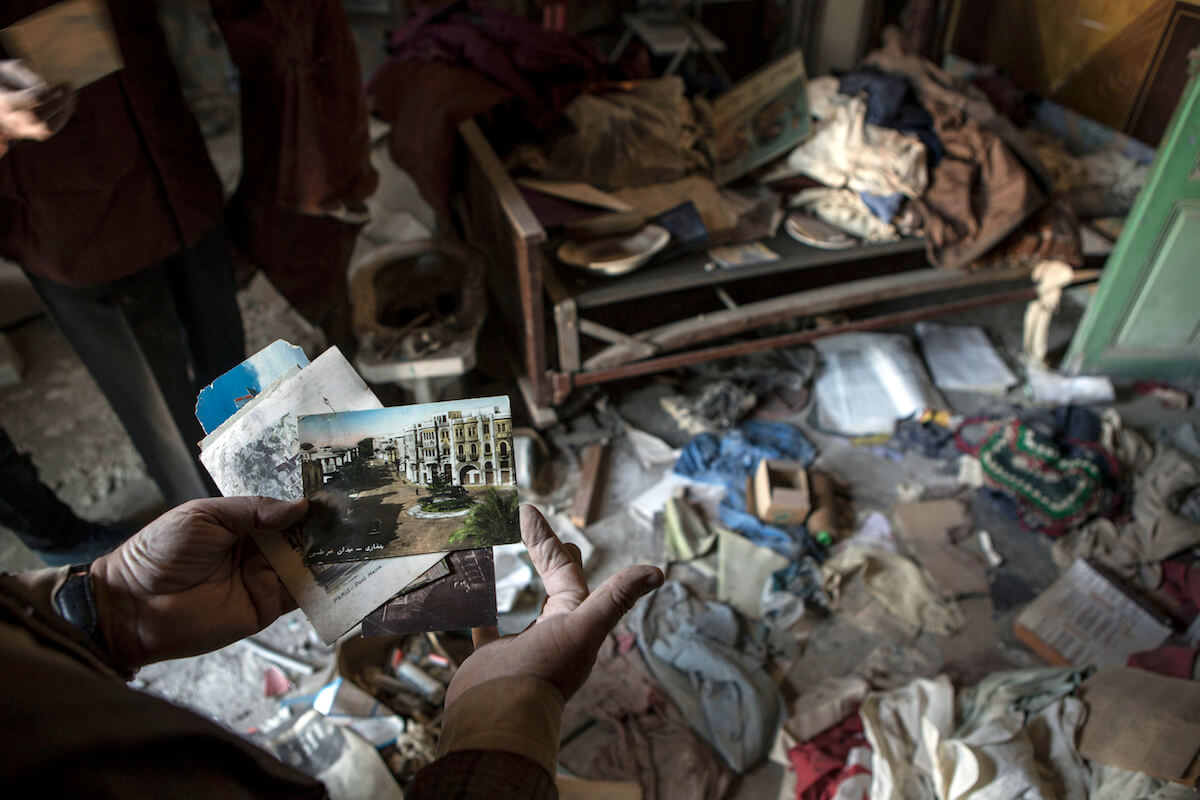
Muffled traffic sounds penetrate through the moth-eaten, brocade curtains. Beyond the vibrating glass panes lies a historic but now insalubrious part of old Tunis, neglected but lively, lined with cafes serving shisha. Dust motes swirl in the dim light with every step taken inside the house.
“When they first arrived here from Algeria and Mauritania in the 1820s, my family settled in Bab Jdid (the New Gate),” says Salah Bakir, an ancestor of the family. “It was outside the walls of the Medina and the last area of Old Tunis to be developed before the French came.”
Once the French project got under way, the colonial power expanded the city by dredging the marshland, lapping up against the Medina walls and laying down Haussmannian boulevards. First among them was the Boulevard Marine known today as Bourguiba after the country’s first post-independence leader, which formed the background to media coverage of the 2011 Tunisian revolution. Apartments with elaborate façades fronted such boulevards and electric trams coursed along them. To the pre-modern locals, it must have looked like a spell had been cast on their city.
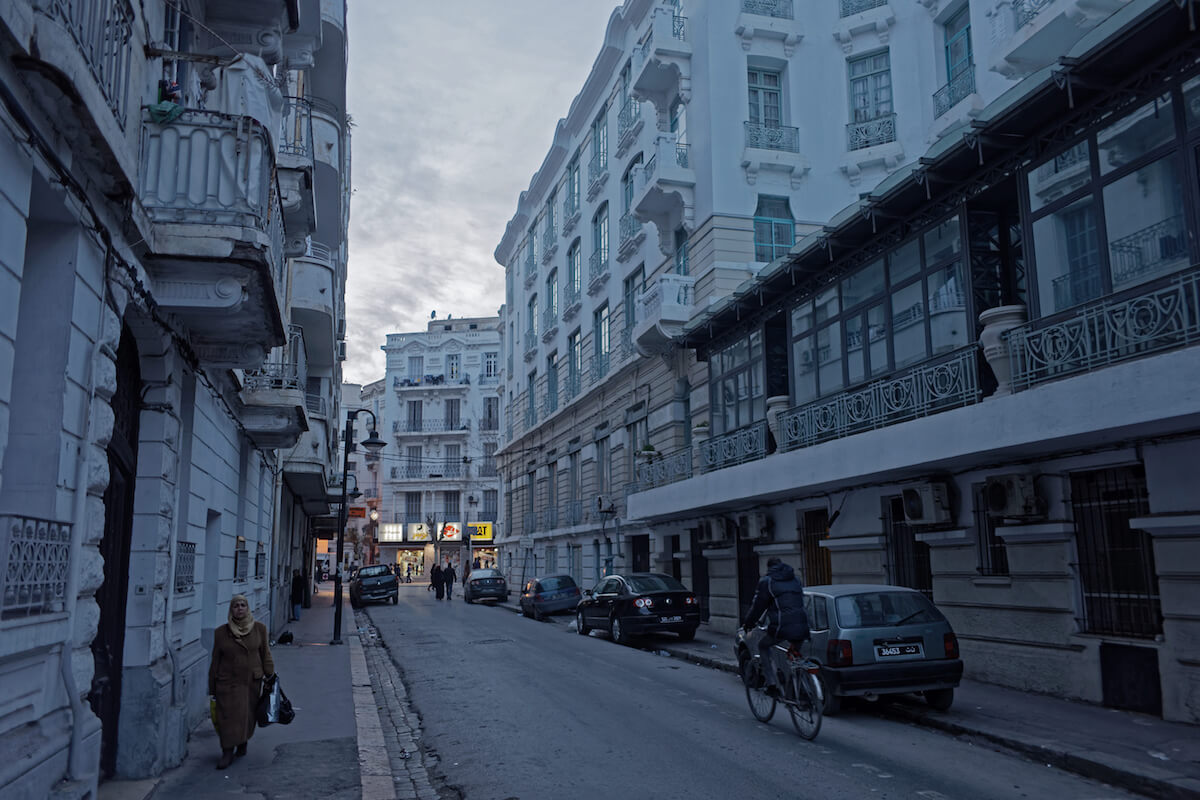
A division emerged at this time between the ‘Arabic’ part of the city, which became a synonym for tradition and backwardness, and the electrifying mixture of unprecedentedly tall apartments and open sightlines inhabited by the Europeans and the Europeanized.
Tunis was becoming a mini-Alexandria, an erstwhile Dubai: a commercial hub alongside Algiers, Tripoli and Tangiers to serve the European ports of the northern Mediterranean. In the late 19th century, the city that had hosted Phoenician traders, Vandal and Viking raiders, Arab invaders, Genovese traders, the refugees from the Muslim empire of Andalus known as Moros, African slaves trafficked in North African markets, and Charles V and his Habsburg marauders, adopted a proto-capitalist guise, as new hotels sprung up offering visiting businessmen modern commercial passages, theatres and cinemas, advertorial kiosks and more of the contemporary city’s accoutrements.
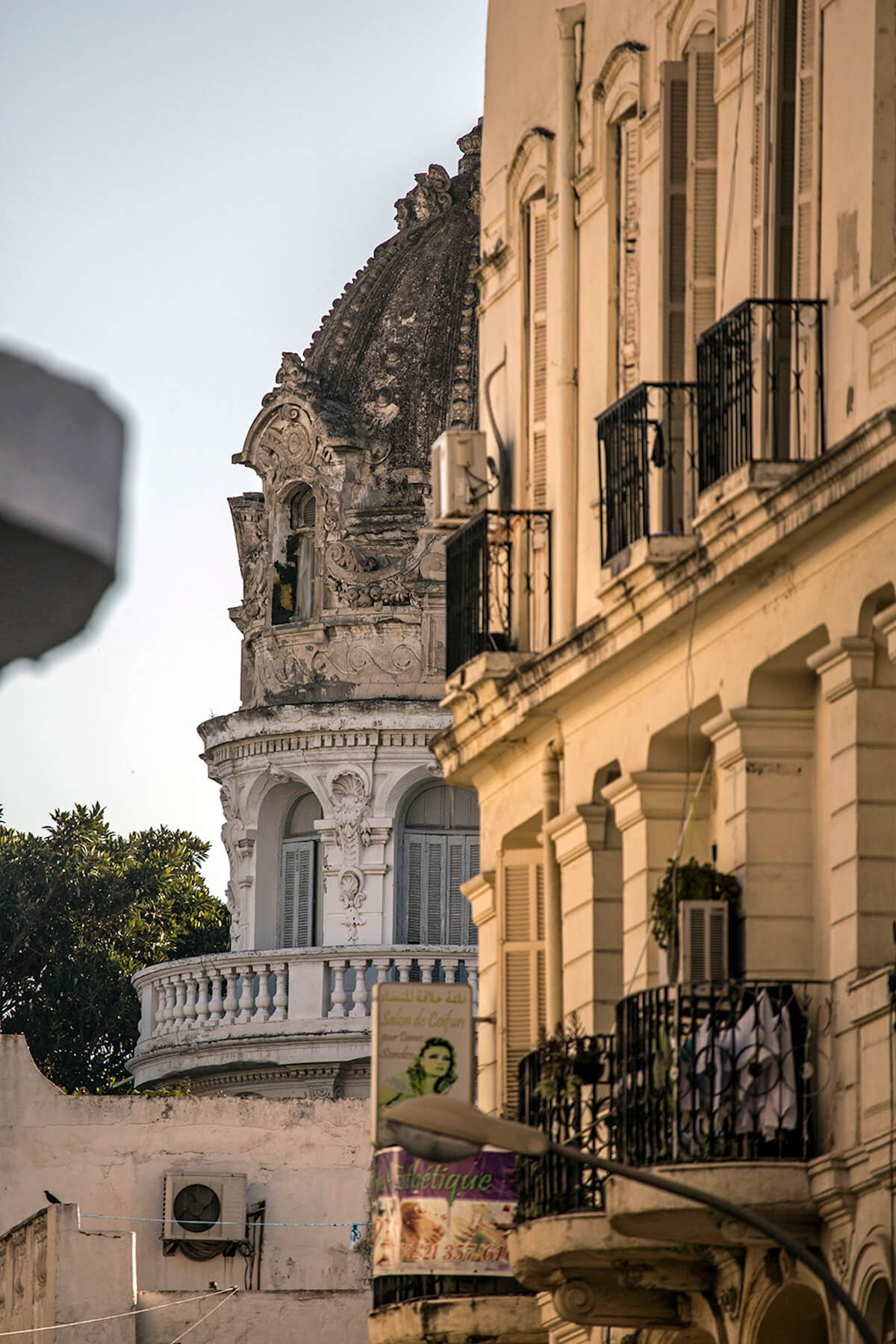
But the imported lifestyle didn’t charm everyone. The homa (popular neighbourhood) retained its population (and popularity), then as now. The tree-lined streets and cafes buzzed with an intimacy and community absent from the immaculate boulevards. While the new city’s novelties charmed one part of Tunisian society, another shrugged its shoulders and kept doing things the old way. Some Tunisians rushed to adopt foreign languages and customs, others decided the newfangled ways weren’t for them.
The legend of the Roman aqueduct and the Berber princess reveals the Tunisia struggling with modernity since time immemorial. An astonishingly beautiful daughter of a Berber ruler subjugated by the Romans tried to avoid marrying a Roman general while avoiding causing a diplomatic incident. She consented to the undesirable marriage only on the condition that he brought the waters of distant Zaghouan and Djouggar to Carthage without once touching the earth, an unimaginable feat.
The Roman general leveraged his empire’s superior technology to create the engineering marvel that is the still-standing 132km Roman aqueduct. Once finished, he proudly led the princess to admire his masterpiece. In order to appreciate it better, she asked whether she could climb to the top of one of the arches. From up there, she gazed over her beloved country one last time, recognized she had lost the bet, and flung herself into space. As with the Tunisian approach to modernity, her suicide is ambiguous: it could be interpreted as a senseless act of self-destruction, or one that expresses love of self-determination and dignity.
“This was my aunt’s house and I grew up here,” said Olfa Annebi, a member of the Bakir family who now lives in the suburb of La Marsa, looking around the internal courtyard overgrown with trees. “We’d go out into the hayat (patio) to wish each other goodmorning, there was movement throughout the day as relatives came through, and at mealtimes five or six different dishes would be served.”

“Everyone knew and respected us in the neighbourhood,” she said. “It was a totally different attitude to today when we feel like strangers, split up and living separately.”
“Ya hasra!” (What a pity)
Like Istanbul, Thesssaloniki, Cairo and many other once-upon-a-time metropolises whose cosmopolitanisms were pulverized by geopolitics and the reductionist founding myths of the nation-state, Tunis is a city of absences. These are most felt in La Goulette, the pleasant seaside neighborhood now deserted by its Jewish and Catholic residents; the suqs in the Medina abandoned by Jewish traders and Muslim aristocrats alike; the decaying, high-ceilinged apartments, bars and synagogues of Lafayette, once rowdy with the sound of Italian and French; the soaring bell-towers of the Cathedral and St Croix, or the onion domes of the Greek Orthodox church close to Bab al-Bahr, the Gate to the Sea.

What remains is the patina of an early 20th century modernity, the traces of a Westernised educational system, and a warning in the poorly-constructed, high-rise business suburbs named Lac 1 and 2 that, for the time being, Gulf-style modernity appears to be the only available alternative.
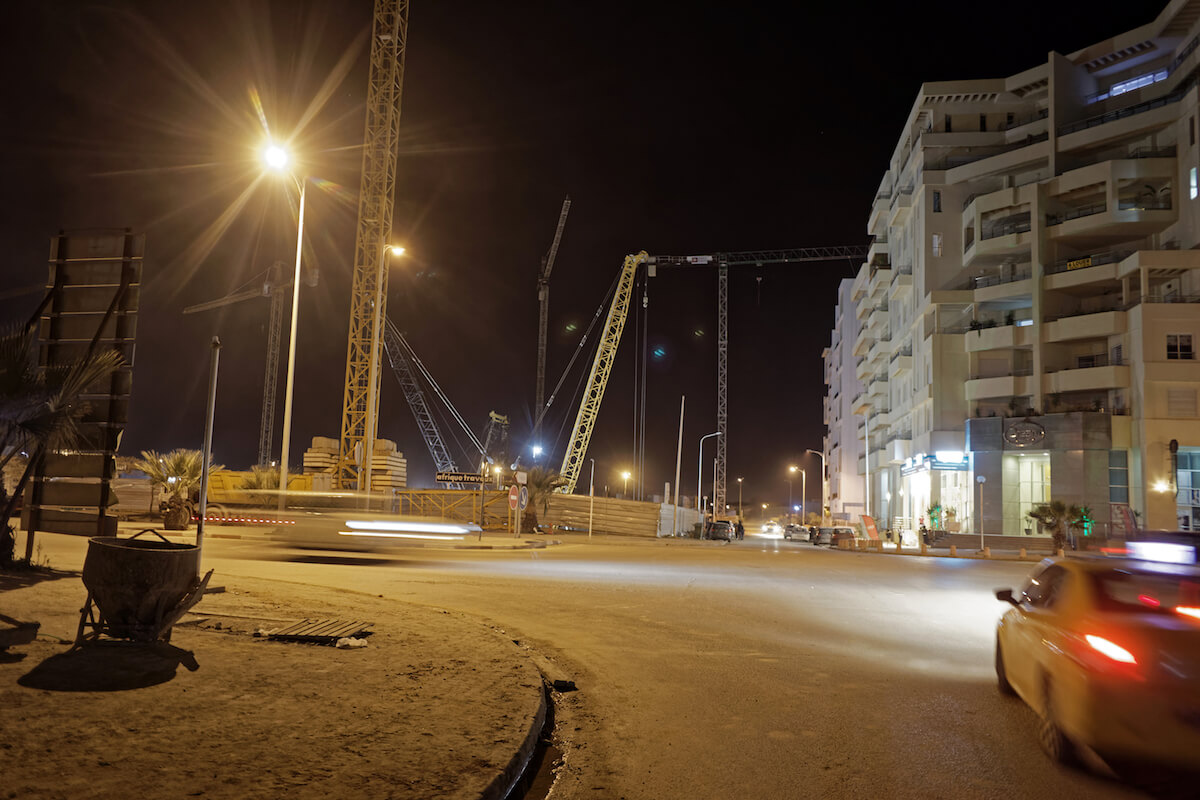
“I’ve been present at the opening of a couple of the Medina’s grand old homes that had remained shut for years, and there is an extraordinary feeling of time having stopped, of a sucking back to the past, when the doors are unsealed and you enter for the first time a place where everything has remained as it was the day they left that place,” says Zoubeïr Mouhli, the director of the Association for the Conservation of the Medina as he turns over a rediscovered treasure in his hands. “Υou feel you can turn the knob of the antique radio and you’ll hear news of the latest advances of the armies in the battlefields of World War Two.”
Today’s Tunis is an overlooked city on the doorstep of Europe, with neither the wealth or political importance of an Algiers, nor the urgent dysfunctionality of a Tripoli. Violence and the siren call to jihad fester along its border with Libya, and a projected bridge megaproject to Sicily that would physically connect it to the European landmass appears stalled. Tunisia’s sovereignty is as diluted as during the time of its dictator, and it has devolved into a territory of transit and transition, with various European policymakers latching on to its poverty, overall moderation and proximity – Rome is equidistant to Tunis and Milan – as reasons to make it part of their solution to the refugee crisis.
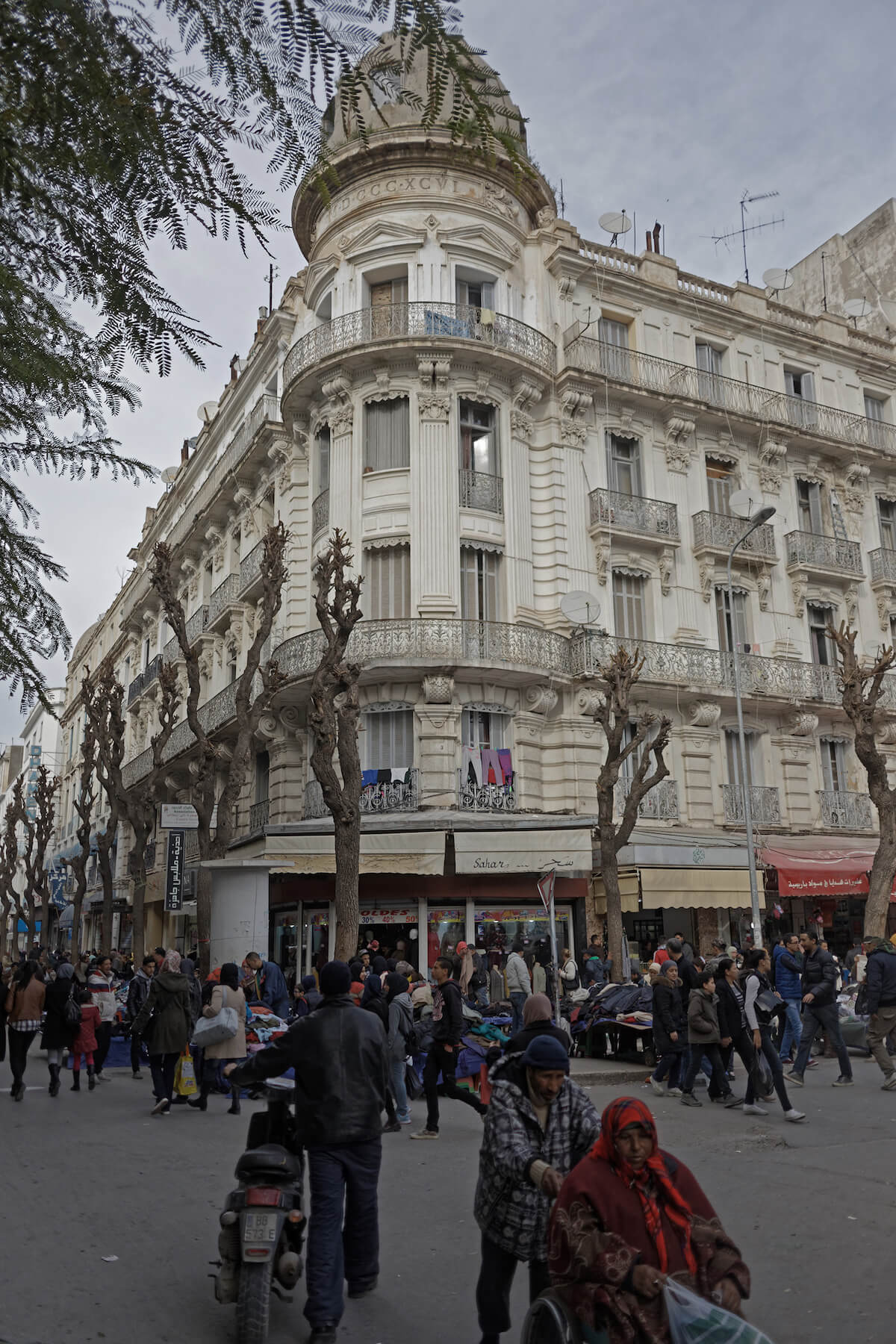
On Bourguiba Avenue, the city’s polished showcase, two visions of Europe coexist. There are the antique, genteel buildings and church spires of a Europe seemingly frozen in time just before the cataclysm of World War 2 bombed its way through. Meanwhile, the armed patrols on the lookout for a possible jihadi attack on the city’s main entertainment district and the barbed wire surrounding the neoclassical French Embassy and high-rise of the Interior Ministry, hold a vision of a dysfunctional Europe collapsed among its internal contradictions.
Yet maybe the time-capsule of contemporary Tunis holds more for European officials than just a pleasant diplomatic tour of duty and temporary storage for migrants seeking to cross the Mediterranean; its millennia of integrating Jewish, Phoenician, Greek, Roman, Vandal, Arab, African and European intruders cannot be overlooked for the convenience of subcontracting out to a weak, needy, North African country the consequences of centuries of colonial, capitalist and anti-ecological policies. Our actions of today will shape the layers of accreted history revealed to a future generation opening up, in some indeterminate future, a Tunisian apartment from the early 21st century.
***
* This piece, and Iason’s related portfolio, won the ‘Special Alumni’ award at the Anna Lindh Foundation’s Mediterranean Journalist Awards 2017.
Author’s bio
Iason is a Mediterranean-focused multimedia journalist based between Athens, Istanbul and Tunis. He reports on how once-cosmopolitan, now-neglected port cities can recover from the effects of colonialism and nationalist narratives while adapting to the era of climate change, mass migration, and the misapplication of distorted modernities.
![Political Critique [DISCONTINUED]](https://politicalcritique.org/wp-content/uploads/2015/09/Political-Critique-LOGO.png)
![Political Critique [DISCONTINUED]](https://politicalcritique.org/wp-content/uploads/2015/09/Political-Critique-LOGO-2.png)